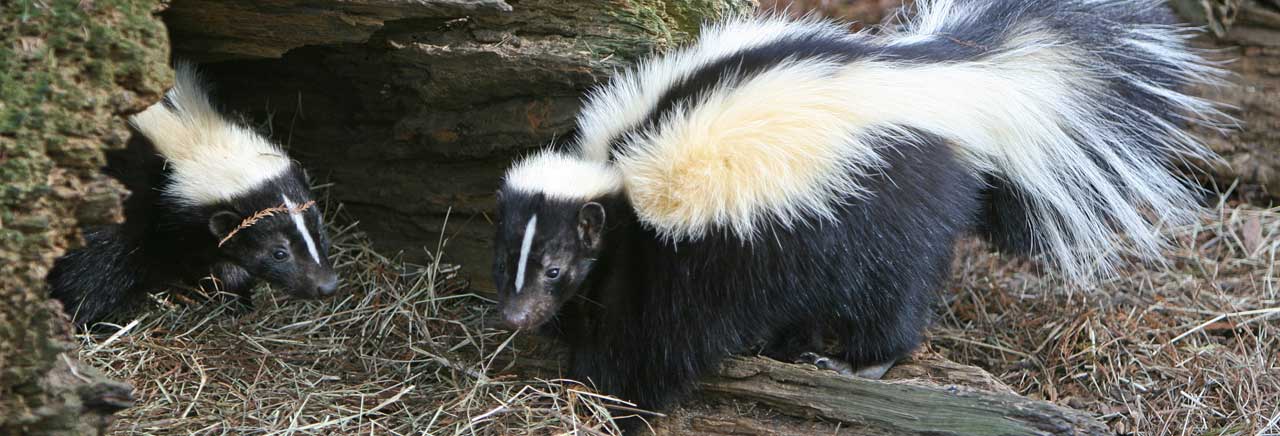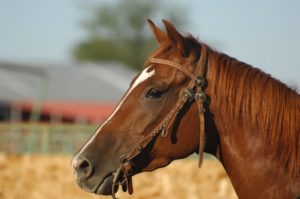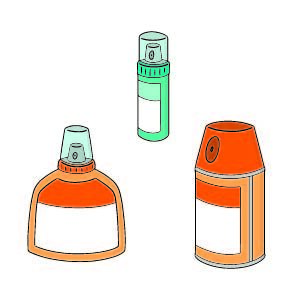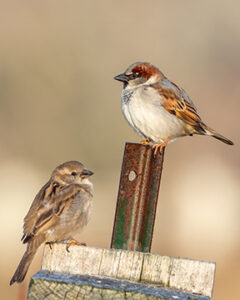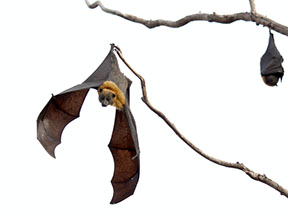
There are a few different types of bats in Pennsylvania; if you see a bat it is most likely a little brown bat or a big brown bat. Bats are protected and heavily control bug populations near their roosting (nesting) sites.
Bats are also common carriers of rabies, and great care must be taken throughout the removal and repair process.
About Little Brown Bats
Little Brown Bats are the most common bats in PA. Their fur is golden, red, or olive brown featuring a darker face. Their feet and wing membranes are black.
They prefer to create their nests, or roosts, in buildings, trees, woodpiles, caves, or manmade structures.
However, their populations are dwindling due to white-nose syndrome. White-nose syndrome is a fungus that attacks bats during hibernation periods. The disease is fatal for bats but it does not affect humans.
About Big Brown Bats
Big brown bags have brown, glossy fur. Their wing membranes, face, and feet are dark brown to black. They are much larger than little brown bats, their wingspan stretches up to 13 inches!
Big brown bats can migrate hundreds of miles, and their larger size allows them to hibernate in lower temperatures compared to other Northern American bat species.
Big brown bats hibernate in similar conditions as the little brown bats.
Hibernation
Bats enter torpor, or hibernation when their body temperature is able to drop to near freezing. A bat’s heart rate drops from 200-300 beats per minute to 10 beats per minute. Moreover, they can even go for a few minutes without taking a breath.
In torpor, bats’ energy consumption is reduced by 98%; this allows them to remain in torpor for a few hours or even up to a month in winter. If bats wake up or are disturbed often, they burn through the fat they have stored for the winter before springtime.
Bat Removal
With new developments and construction, bats may be forced out of their homes. However, they reintegrate themselves back into the new environment, making your home their new home.
Additionally, the most common signs of bats in your home are chirping or rustling sounds. As nocturnal animals, these noises likely occur in the evening, late at night, or early in the morning. They also leave grease-stained appearances on components near their entry points.
As mentioned before, bats are protected and there are restrictions on the timing of removal. Depending on what season it is, we can place one-way doors along with sealing secondary entry points, which ensures bats can leave, but not return.
During the summer, we cannot place one-way doors until the young are large enough to fly if a maternal colony is present. We can seal secondary entry points, but primary entry points must remain open.
Repair and Remediation
In addition to sealing entry points, we also offer other methods of exclusion. Chimney caps, custom screening, and vent covers are all preventative services we offer for bats and other animals.
We also offer cleanup of bat droppings (guano). Guano is hazardous due to the potential presence of histoplasmosis, we use HEPA-filtered vacuums and PPE to prevent transmission.
Give us a call or use our contact form for the removal and repair of different types of bats in Pennsylvania!
